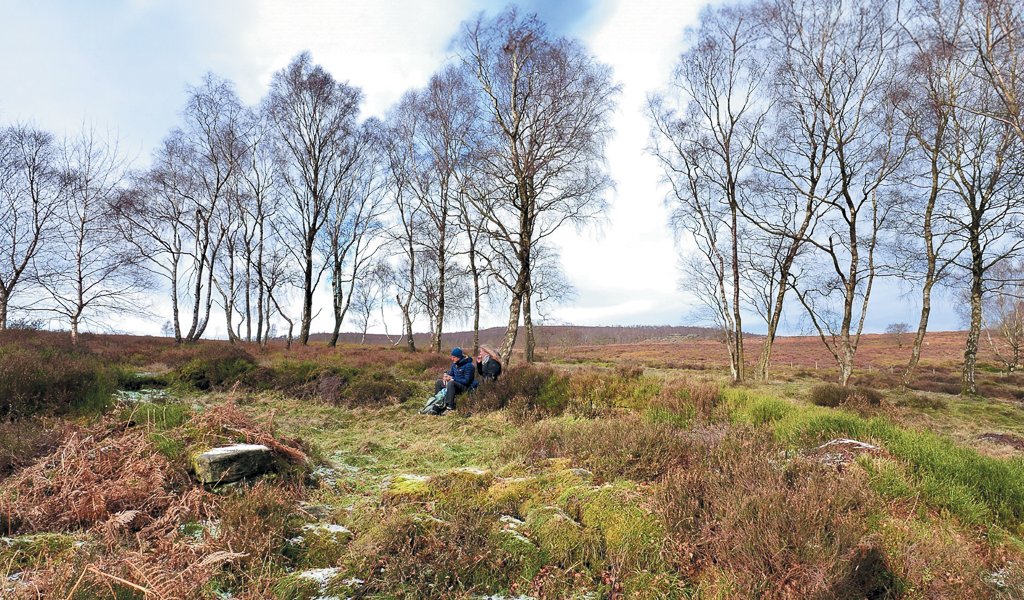Part of the Peak District is studded with the names of monks who cleared moorland for farming, writes Barrie Farnsworth.
On and around the Longshaw Estate, there is a Lawrence Field, a Mitchell Field, a Timothy Fields and a Gregory Fields. They are believed to all have been based at a long-gone monastic grange – a farmstead – at Strawberry Lee, just over the hill from Longshaw towards Sheffield, which was connected to Beauchief Abbey.
So, Brother Lawrence cleared his field between the A6187 Surprise View road and the B6521 to Grindleford – not that the road numbers existed then – on the moorland just north of Burbage Brook.
There is a three-acre medieval field system with an enclosure wall and two longhouses on Lawrence Field – dated to around 1100 AD, which may have been slightly early for Brother Lawrence to have set that up, as Beauchief Abbey was founded as a ‘daughter establishment’ of Welbeck Abbey and opened in 1183, so the farming monks of the Peak District must have cleared their fields a century or so later.
What is not in doubt is that a large, irregular-shaped – and incomplete – enclosure defines the remains of the medieval field system. The very fact that it is incomplete suggests that the wall, at some time, was taken apart to be put back together, but that process was never completed.
Within the enclosure are a series of rough stone banks which define individual fields, whose position and poor soil quality suggests the clearance was undertaken to facilitate grazing. Also, there are also some large cairns which might even have been barrows (burial mounds) – clearly not the work of Brother Lawrence!
What is clear is that the Premonstratention Monks and their Abbott of Beauchief Abbey, when it was first founded, owned the surrounding areas of Greenhill, Totley and Bradway – and were eventually to own vast parts of Peak District moorlands, all donated by landowners, which enabled the Abbey to become very wealthy.
The Lawrence Field ‘medieval settlement and field system’ is mirrored across the Burbage Brook valley within Sheffield Plantation – the other side of the B6521. There is a similar enclosed field system and longhouse. Experts consider that these enclosures and house remains are evidence of ‘medieval assarting’ – clearing forested land – whereby patches of land were cleared and farmed after the Norman Conquest.
As there is a similar block of ‘assarted land’ in Lawrence Field, which is associated with the two longhouse remains, one of which is believed to be of 12th century origin – and that could point to Brother Lawrence’s work, as monastic communities were known to “assart” in the Middle Ages.
Interestingly, some of the features at the Sheffield Plantation site relate to an earlier field system which may have had its origins in the Bronze Age. Similar Bronze Age field systems are recorded on the backslopes of many of the gritstone edges in this region – so it looks like Brother Lawrence was following Bronze Age man and Saxons in farming this area.
The Cistercian order of monks were the first to establish a system of farming in the UK, with agricultural units separate from their monasteries. These became known as granges, derived from the French ‘graunge’, itself from the Latin word ‘grana’, meaning a granary. Other orders, like the Premonstratention Monks, followed suit and the practice spread.
These grange farms were to generate profit for the ‘mother-house’ (monastery, abbey or priory), with wool being the major money earner in the Middle Ages.
In Derbyshire, however, no medieval granges survive – and because many non-monk farmers started to add the word grange to their farm name to give it extra kudos, it is now difficult to know where the monastic granges really were. Among the ‘genuine’ was the scheduled monument of Mouldridge Grange, whose remains are close to Mouldridge Grange Farm, near Pikehall.
In the High Peak, it is known that monastic granges are found within the boundaries of the old Royal Forest of the Peak such as Crookhill and Abbey Bank in the Upper Derwent valley. Others stand alone in the moorlands: Harewood Grange in Beeley parish and, of course, Strawberry Lee above Totley.






